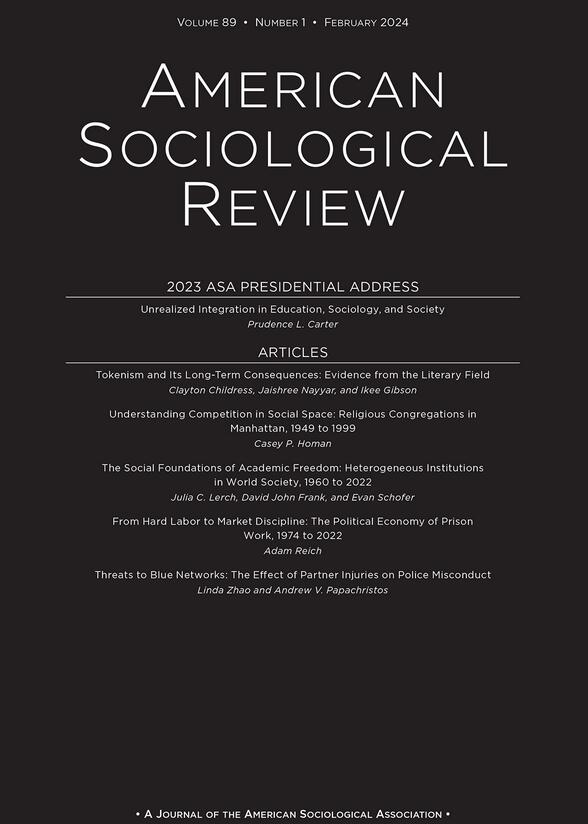联想扩散和结构还原论的陷阱
IF 6.2
1区 社会学
Q1 SOCIOLOGY
引用次数: 0
摘要
在他们富有洞察力的评论中,DellaPosta和Davoodi认为,我们的发现(Goldberg and Stein 2018),即分段网络抑制文化差异,并不能推广到大型网络。然而,他们的论证依赖于联想扩散模型中偏好更新过程的错误实现。我们表明,一旦这种差异得到纠正,文化差异在完全连接的网络中更加明显,无论网络大小如何,甚至在认知衰退的极端假设下也是如此。我们借此机会讨论关联扩散模型的假设和范围条件,以及批判性地重新评估流行的基于传染的扩散模型。本文章由计算机程序翻译,如有差异,请以英文原文为准。
Associative Diffusion and the Pitfalls of Structural Reductionism
In their insightful comment, DellaPosta and Davoodi argue that our finding (Goldberg and Stein 2018) that segmented networks inhibit cultural differentiation does not generalize to large networks. However, their demonstration rests on an incorrect implementation of the preference updating process in the associative diffusion model. We show that once this discrepancy is corrected, cultural differentiation is more pronounced in fully connected networks, irrespective of network size and even under extreme assumptions about cognitive decay. We use this as an opportunity to discuss the associative diffusion model’s assumptions and scope conditions, as well as to critically reassess prevailing contagion-based diffusion models.
求助全文
通过发布文献求助,成功后即可免费获取论文全文。
去求助
来源期刊

American Sociological Review
SOCIOLOGY-
CiteScore
13.30
自引率
3.30%
发文量
35
期刊介绍:
The American Sociological Association (ASA) is a non-profit membership association established in 1905. Its mission is to advance sociology as a scientific discipline and profession that serves the public good. ASA is comprised of approximately 12,000 members including faculty members, researchers, practitioners, and students in the field of sociology. Roughly 20% of the members work in government, business, or non-profit organizations.
One of ASA's primary endeavors is the publication and dissemination of important sociological research. To this end, they founded the American Sociological Review (ASR) in 1936. ASR is the flagship journal of the association and publishes original works that are of general interest and contribute to the advancement of sociology. The journal seeks to publish new theoretical developments, research results that enhance our understanding of fundamental social processes, and significant methodological innovations. ASR welcomes submissions from all areas of sociology, placing an emphasis on exceptional quality.
Aside from ASR, ASA also publishes 14 professional journals and magazines. Additionally, they organize an annual meeting that attracts over 6,000 participants. ASA's membership consists of scholars, professionals, and students dedicated to the study and application of sociology in various domains of society.
 求助内容:
求助内容: 应助结果提醒方式:
应助结果提醒方式:


